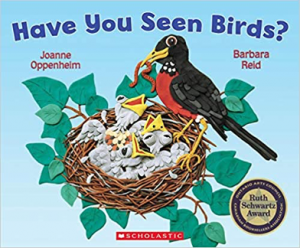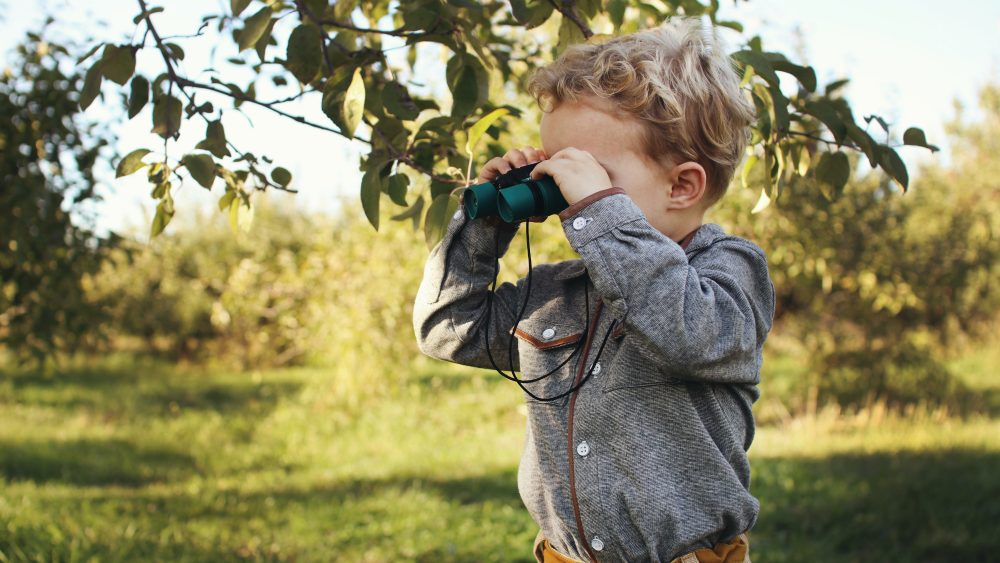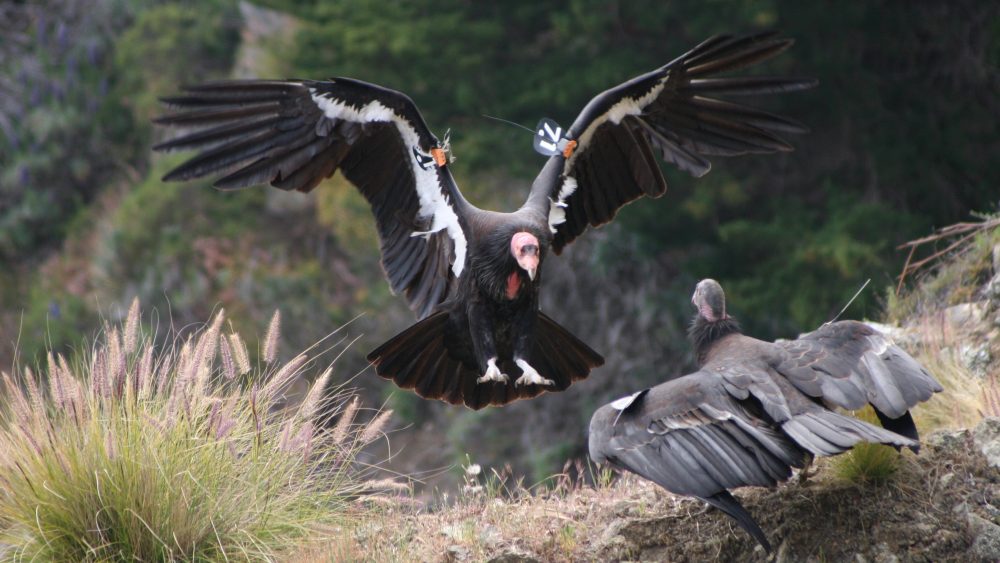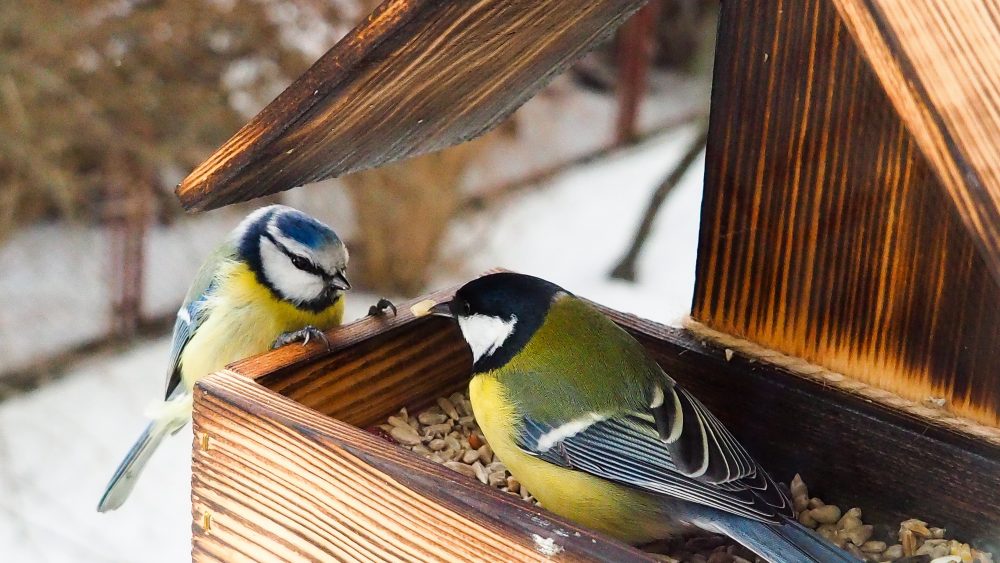Investigating Birds in Spring
Investigating Birds in Spring
To me, birds are a nearly perfect teaching tool. They offer us a form of natural play, sparking joy as one ventures out to spot a migrating species or looks up to note a Red-tailed Hawk circling overhead. They inspire a curiosity about air and flight, migration and time, breeding and survival. They have the potential to connect us to the natural world and make us aware of our shared habitat. In the right moment, they can excite an almost transcendental experience in me, much like a good book, where I feel as if I’ve entered into an other-worldly magic.
While I don’t expect every child to fall in love with birds, I do expect there to be something about birds that will spark a curiosity in every child. Whether it is in exploring how things fly, charting migration patterns across the world, or designing feeders that can outsmart the wiliest squirrel. A bird inquiry also offers many cross-curricular learning opportunities, and a chance for students to take their learning outside and make real-world connections. Each child may not fall in love with birds, but a well-designed inquiry will teach them how to fall in love with learning, so when they find what they love they can explore it in all its richness.
There are many excellent ways to begin a classroom inquiry, but with a bird inquiry I believe that early on you want to get students outside observing birds in the real world. In spring and autumn (migration season), this can look like taking students out to the playground, a nearby park or ravine, or on a field trip, to collect bird sightings, which leads to a data set for students to work with. In the winter, it can begin by laying out seed and observing which birds and other creatures show up. When students begin to observe birds, questions will naturally arise and as they uncover their own curiosities, their questions can begin to direct the learning.

Book Recommendation
This beautiful book, written in rhyme, and filled with pages of incredible plasticine images of dozens of species of birds, is an excellent introduction to a bird inquiry. It can inspire all sorts of questions: Why do birds puff up in the cold? Why do some birds leave for the winter? Why are owls awake at night? It’s also great inspiration for a plasticine art lesson, encouraging students to really look carefully at the shape and colour of a bird in order to make a 2D representation.
Collecting Bird Sightings
There is a timeless instinct in children to collect things, particularly things found in nature. Perhaps you, or someone you know, had a collection of shells or rocks, each a little different, each connected to a particular moment in time. Lekies, Beery, and Brensinger (2017) describe the positive impact these collections have on children’s relationship to nature, as well as their analytical and critical thinking skills. Children pay close attention to their collections, often finding different ways to sort and understand them.
Today, we may caution our kids to leave the rock or shell behind, encouraging them to be aware of the footprint they leave on a space. At the same time, we are bombarded with collectible commercial goods. A study out of the UK found many children had a much easier time identifying Pokémon than local plant and animal species, demonstrating that children continue to have a desire to learn and categorize, and that they are also currently more likely to engage this instinct with the synthetic rather than the natural (MacFarlane, 2017).
Lesson 1: Birding Field Trip
Get your students outside and excited about making observations! We suggest a field trip to a location with potential to see a variety of birds, but the school playground is a good spot, too! All you need: binoculars, sketch pads, pencils/erasers, magnifying glasses and cameras, if you have them. We have suggestions about how you can create your own field guide for the class.
Make your own bird guidebook
In many cities, a quick Google search will find a printable bird guide with images for students to use to begin identifying local species. For younger students, you can create your own, choosing a few species you are likely to see in the neighbourhood at the given time of year.
Allaboutbirds.org offers great ID info, including the relative size indicator seen here.
Recording Bird Sightings
Recording bird sightings represents an ideal development of natural naming skills, accompanied by the playful instinct to collect and categorize. As children learn to identify species by shape, colour, size, and sound, they begin to notice and distinguish common sightings from rarer sightings, leading to the collection of a greater and greater range of species. They can get hooked and join Birders the world over in search of “lifers,” birds seen by a bird watcher for the first time in their life.
Students’ sightings become an excellent source of data, which they can explore to ask questions ranging from “Which bird did we see the most of today?” to “Which bird species are in decline and why?”
Lesson 2: Getting to Know eBird
Introduce your students to a database of bird information contributed by everyday birders. As your navigate the website, they will encounter bar charts, data regarding habitat, location, population and migration. But first, show them how data and information helped rescue the Condor from near extinction.

eBird Migration Animation
This visualization of the migration pattern of Barn Swallows shows the location and relative abundance of the species throughout a year. Cornell Lab is able to make these graphics using data from eBird, which students can contribute to by entering their bird sightings here.
Architecture challenge: A squirrel proof bird feeder
Feeding birds in the winter, if done responsibly, offers an opportunity to support declining bird populations by increasing their winter survival rate. It also presents an amazing opportunity to get a good look at lots of winter birds on a regular basis. Researching and designing a bird feeding station is a great chance for students to apply measurement, research, design, and financial literacy skills to a real-world problem.
Feeding birds can begin with scattering seed on the ground and watching to see who shows up. Often squirrels are the first visitors, gobbling up all the seed before any birds get to it. This presents an excellent design challenge: can students use recyclables to make a feeder that will feeds the birds and not the squirrels?
If you haven’t fed birds before, you may be surprised to discover just how difficult a task this is. Squirrels are incredibly acrobatic, clever, and persistent creatures, and the display they will put on ensuring they get to the seed is well worth watching. This project offers students a chance to design and redesign a project, and then watch squirrels also apply their problem-solving skills to each new design.
Lesson 3: The Feeder Project
Your class may decide to build a bird feeder to attract birds to the schoolyard. You’ve been investigating local birds and why the environment around the school is their ideal habitat. Have your students consider these details as they plan a potential bird feeder design. Along the way, they’ll also consider different costs, including construction and food type.

An example from kindergarten
Here’s an example of a bird feeder where the kindergarten student assumed the small holes and hanging design would prevent squirrels from eating the seed, but soon found a squirrel hanging upside down and munching through the plastic to create bigger holes!
Things to consider when feeding birds
It’s a good idea to put a very small amount of seed in a feeder, especially initially when birds haven’t yet found the feeder. Seed that remains in the feeder overnight may attract racoons or rats, so make sure it is emptied by the end of the day.
Seed that gets wet can become mouldy if left in a feeder, which can harm birds. If a feeder is washable it can be cleaned with soap and water or soaked in vinegar and rinsed. If not, recycle it and start a new design!
Lots of commercial bird seed contains nuts. Choose a nut-free option, such as plain black oil sunflower (a favourite with birds and squirrels) if allergies are a consideration.
More lesson ideas: Connecting to Data Literacy
Early Years
Students can use tally charts to mark down their bird sightings over a set amount of time. Use the data to answer questions, such as: “How many more sparrows than blue jays did we see?” Students then re-organize the data by creating new categories, such as colour or size.
Exploring Birds Nests in Kindergarten
A two-part lesson exploring and making bird nests.
Designing Bird Gliders in Kindergarten
A three-part exploration designing, redesigning, and testing bird gliders.
Primary & Junior
Primary and Junior students can use their bird sightings to create graphs to represent their data and also use the data to extrapolate broader facts about birds. They can explore questions about which birds are most and least populous in their area, which do and don’t migrate (along with when) and consider what it is that birds who remain for the winter may have in common. Ebird.ca is an excellent resource, allowing students to submit checklists of birds they’ve seen, and discover what bird sightings are being reported near them. Through maps, graphs, and animations, the design of the website inspires users to see how their own data contributes to a growing understanding of bird behaviours, and species populations.
References
- Lekies, K.S., Beery, T.H., & Brensinger, J.D. (2017). Investigating children’s collecting behaviours outdoors. In T. Waller, E. Arlemalm-Hagser, E.B.H. Sandseter, L. Lee-Hammond, K. Liekes, & S. Wyver (Eds.), The SAGE handbook of outdoor play and learning. Sage Publications. http://dx.doi.org/10.4135/9781526402028.n35
- Macfarlane, R. (Sept. 30 2017). Badger or bulbosaur – have children lost touch with nature? The Guardian. https://www.theguardian.com/books/2017/sep/30/robert-macfarlane-lost- words-children-nature

Charlotte Henderson
Teacher, Toronto District School Board






